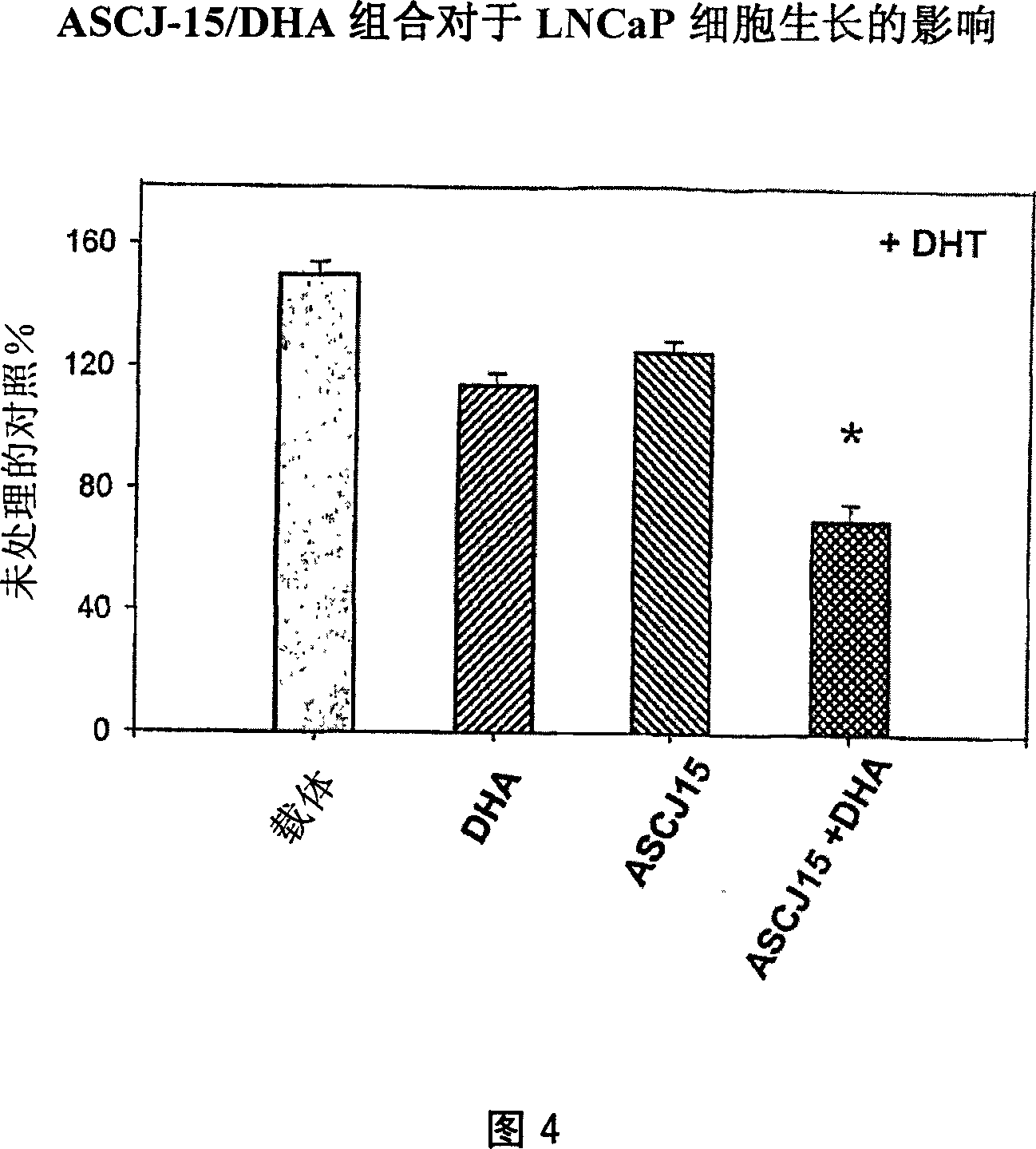Enhancement of anti-androgenic activity by a combination of inhibitors targeting different steps of a steroid-dependent gene activation pathway and uses thereof
A steroid, dependence technology, applied in the direction of drug combination, organic active ingredients, non-central analgesics, etc., can solve the problem of side effects, and does not simply involve androgen binding, etc.
- Summary
- Abstract
- Description
- Claims
- Application Information
AI Technical Summary
Problems solved by technology
Method used
Image
Examples
Embodiment 1
[0092] Example 1: Detection of Steroid-Induced Changes in Gene Activation Using Androgen Receptor Transactivation Assay, MTT Cell Proliferation Assay, and Western Blot Analysis
[0093] The examples provided provide a representative study of the effect of a combination of compounds, at least two of which affect different steps in the steroid gene activation pathway. Examples provided include androgen receptor (AR) transactivation assays to study the effect of different combinations of compounds on the activity of wild-type or mutant ARs found in prostate cancer, and MTT cell proliferation assays to detect The ability of the compound combination to arrest the growth of prostate tumor cells. The identification preferably uses human prostate cancer cells, LNCaP cells, which are used by those skilled in the art to express a clinically relevant mutant androgen receptor (AR), which responds to androgens. In the provided example, dihydrotestosterone (DHT), an endogenous hormonal met...
Embodiment 2
[0104] Example 2: Induction of Androgen Receptor Degradation by Application of Curcumin Derivatives
[0105] Protein immunoassays of LNCaP cell lysates were used to characterize reduced androgen receptor (AR) when LNCaP cells were cultured in the presence of curcumin derivatives (defined as ASCJ compounds). A reduction in the androgen receptor was found when the ASCJ compound was incubated alone in LNCaP cells, when ASCJ was co-incubated with the androgen DHT, and when ASCJ was co-incubated with cycloheximide, an inhibitor of protein synthesis.
[0106] Specifically, LNCaP cells were cultured in 10% CD / RPMI and treated with ASCJ-15 (1 μM), a curcumin derivative, or a control vehicle in the presence or absence of DHT (2 nM)24 Hour. Samples from each well were analyzed for androgen receptor (AR) protein expression by Western blot as described in Example 1. The experiment was performed four times to ensure data reproducibility. Typical data obtained in one experiment are shown...
Embodiment 3
[0108] Example 3: Application of compounds capable of degrading steroid receptors alone or in combination with compounds capable of blocking binding between steroid receptors and corresponding steroid response elements (SREs)
[0109] Compounds that degrade the androgen receptor (AR) can be administered alone as well as in combination with compounds that block or interfere with the binding between the androgen receptor and the androgen response element (ARE). The curcumin derivative ASCJ shown in Figure 2 was used as a compound capable of inducing the degradation of the androgen receptor (AR). Compound ASCJ-15 is provided alone in combination with docosahexaenoic acid (DHA), an omega-3 fatty acid that blocks or interferes with the binding between the androgen receptor (AR) and the androgen response element (ARE). Research on the effect of DHA on the activation of androgen-regulated genes has been ongoing. Chung et al. Effects of docosahexaenoic acid and acid on androgen-regulat...
PUM
 Login to View More
Login to View More Abstract
Description
Claims
Application Information
 Login to View More
Login to View More - R&D Engineer
- R&D Manager
- IP Professional
- Industry Leading Data Capabilities
- Powerful AI technology
- Patent DNA Extraction
Browse by: Latest US Patents, China's latest patents, Technical Efficacy Thesaurus, Application Domain, Technology Topic, Popular Technical Reports.
© 2024 PatSnap. All rights reserved.Legal|Privacy policy|Modern Slavery Act Transparency Statement|Sitemap|About US| Contact US: help@patsnap.com










